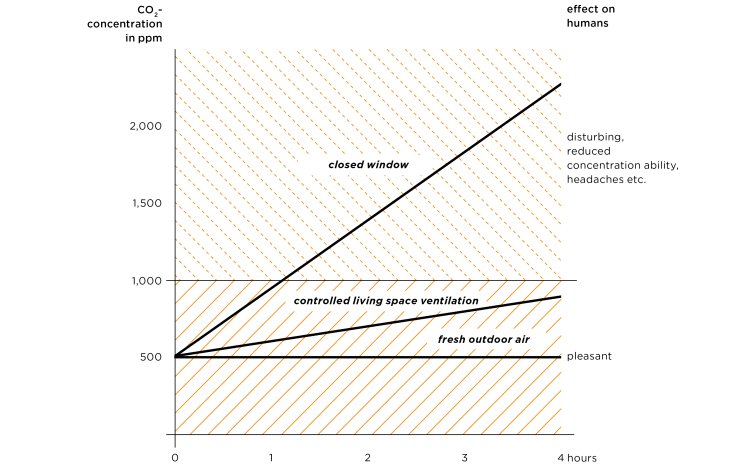The Principles
In modern buildings ventilation is absolutely essential.
Every builder, whether developer or self-builder, should use the latest technology. In our modern world, environment and climate protection are important issues. Equally important are healthy living and working. Statutory requirements such as Building Regulations and EU directives must also be taken into account.

Building Regulations Part L
Building regulations demands for buildings (by EnEV):
• Airtightness:
Buildings should be constructed so that the heat-conducting envelope should be airtight.
• Building insulation and cold bridges:
Buildings should be adequately insulated against external air, earth and building components with low temperatures. To this end a minimum heat loss has been defined. Cold bridges should be minimized.
Consequence 1: mould formation
Mould formation. Insufficient air changes increase humidity in buildings.

Consequence 2: CO2-Concentration
Stale, oxygen deficient air can cause breaks in concentration, headaches and nausea.

Alternative 1: Ventilation by window
Alternative 2: Controlled Ventilation
Modern underfloor heating – an advantage for every building.
The installation of modern low-temperature systems and renewable heating systems such as heat pumps, condensing boilers or biomass boilers can reduce heating costs significantly. Increased thermal insulation creates an air-tight building envelope that also minimizes heat losses. This saves money and valuable natural resources. The installation of underfloor heating also offers advantages. The gentle radiant heat and pleasant floor surface temperature guarantee a unique feeling of comfort. This emphasises how well underfloor heating combines with alternative energy heating and modern heating controls.
And best of all, the low flow temperatures save up to 13% in energy costs!
Primary energy use
Calculations according to DIN 4108-6 and DN 4701-10/12

| Name | Size | Date | ||
|---|---|---|---|---|
| AIRCONOMY® principles.pdf | 2 MB | 23.06.2015 |


































































